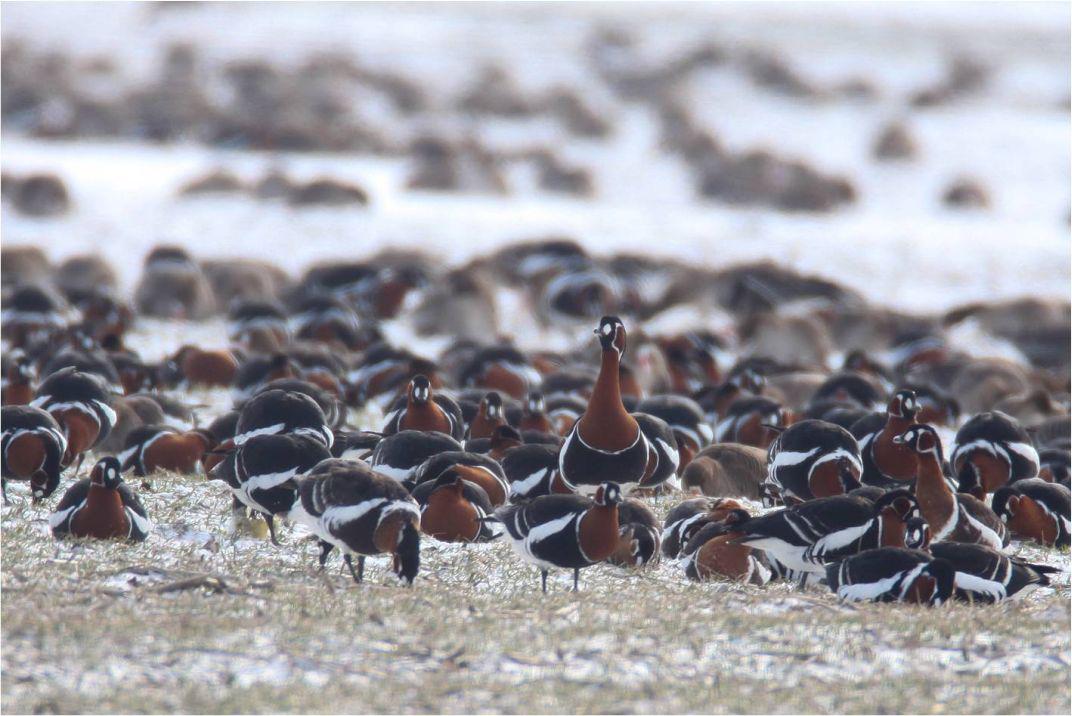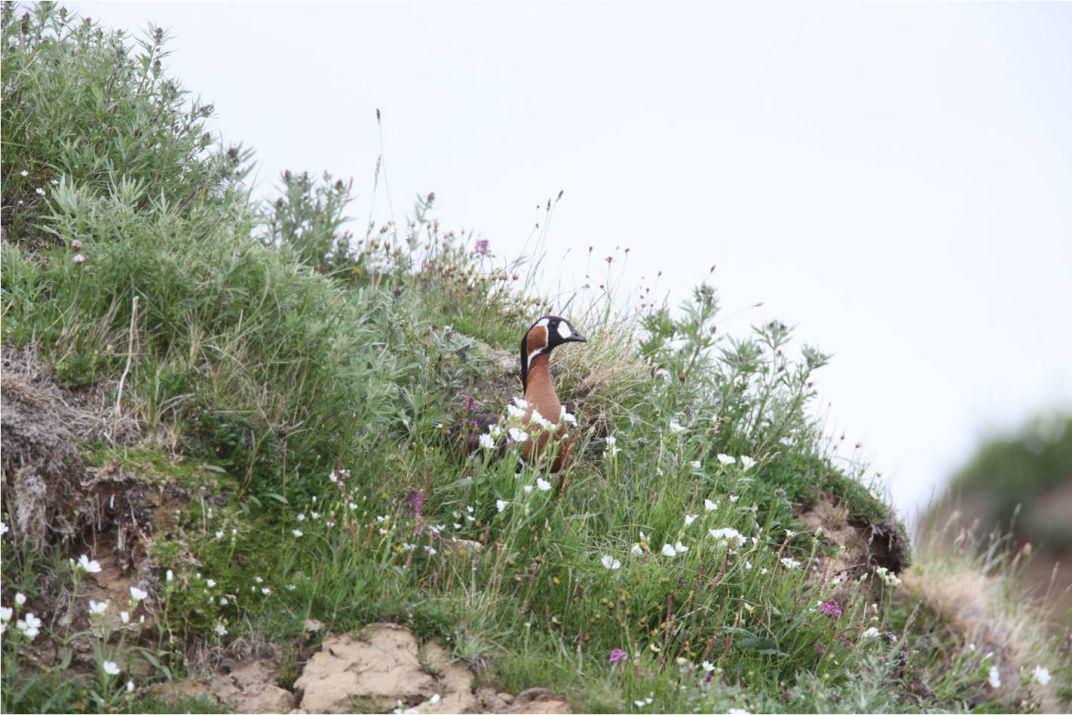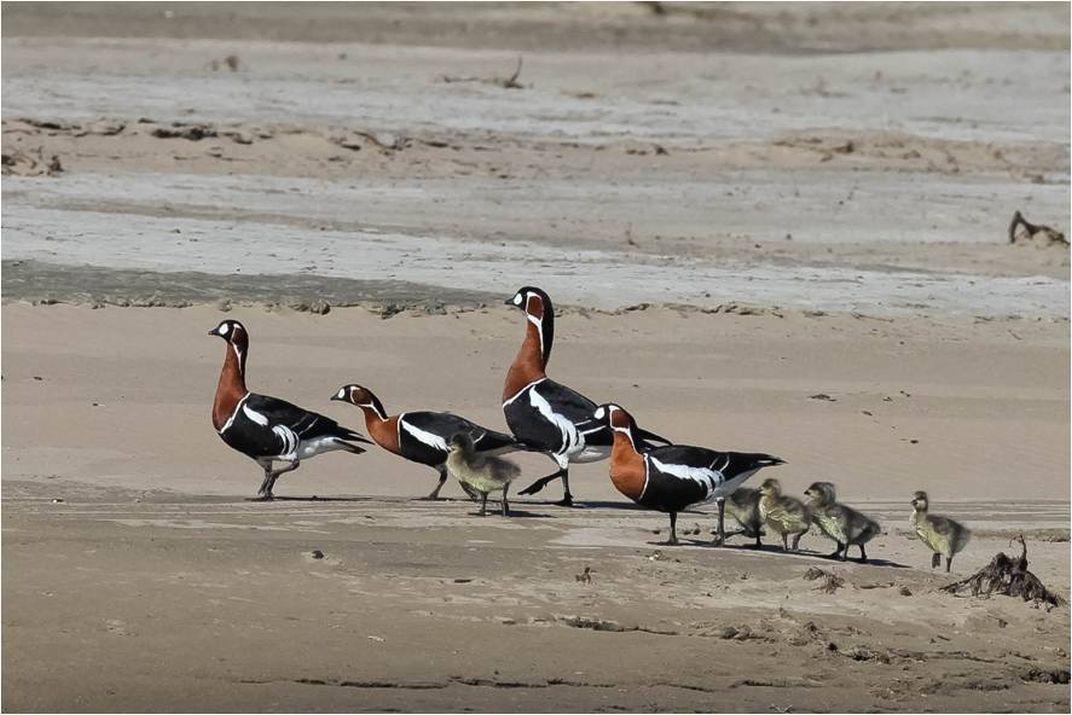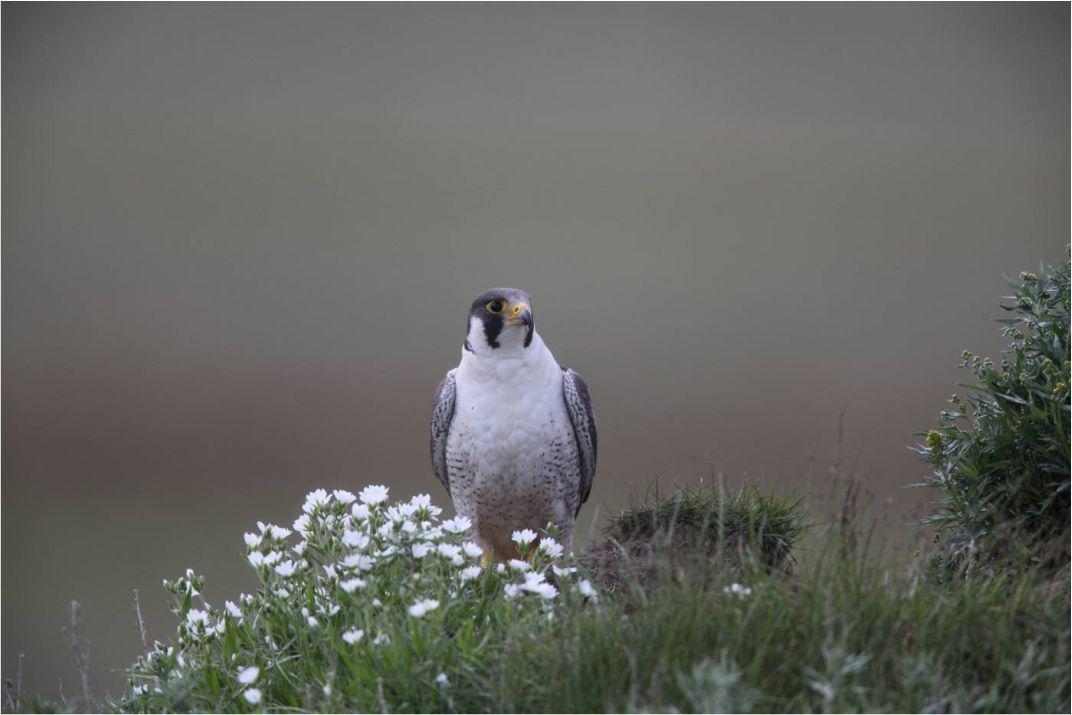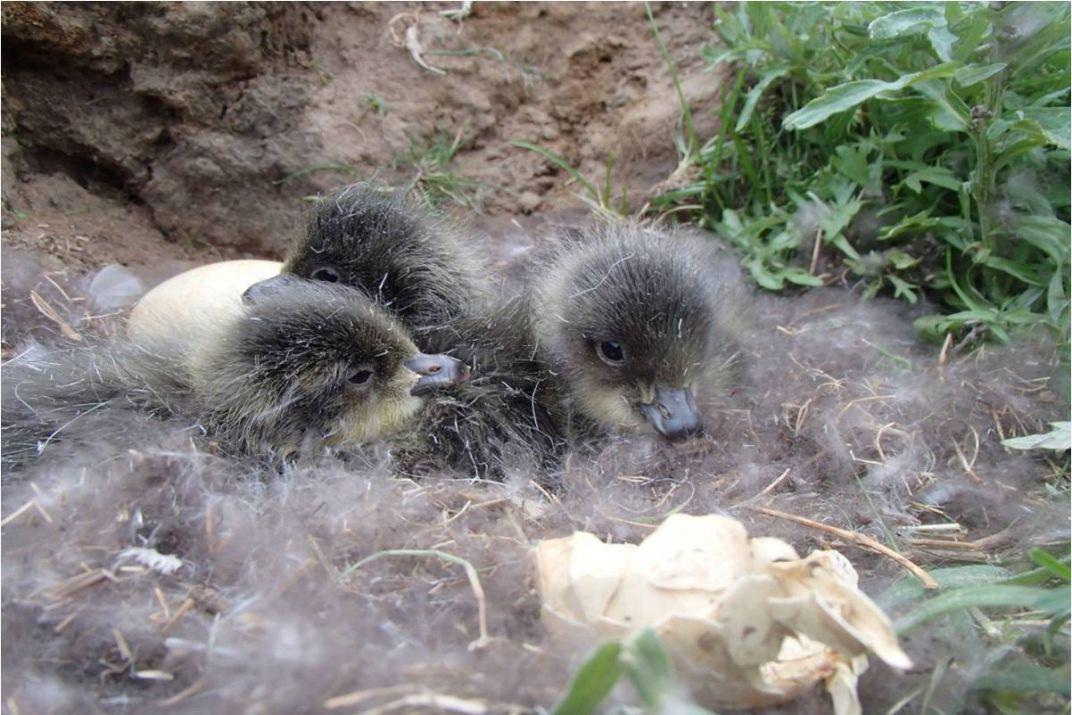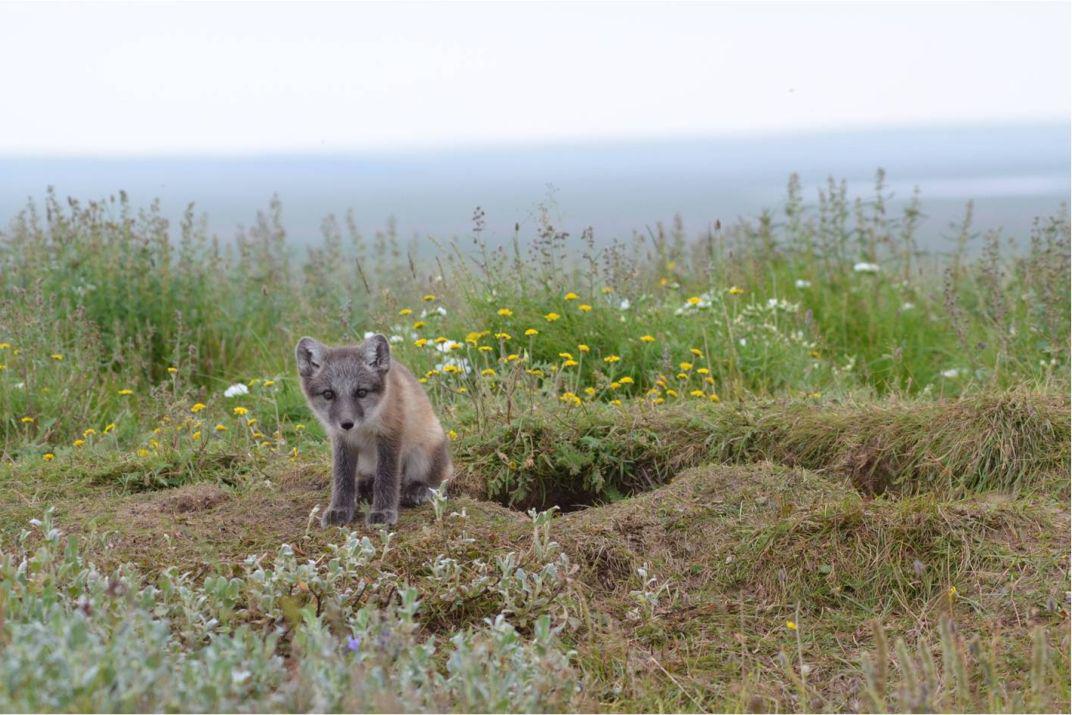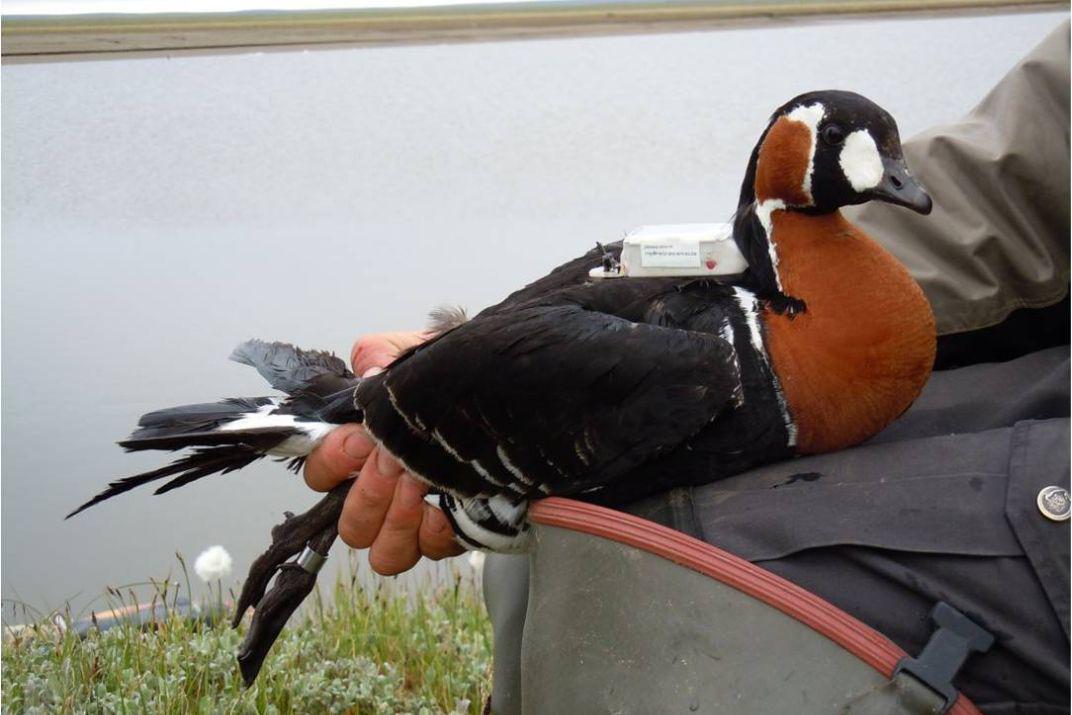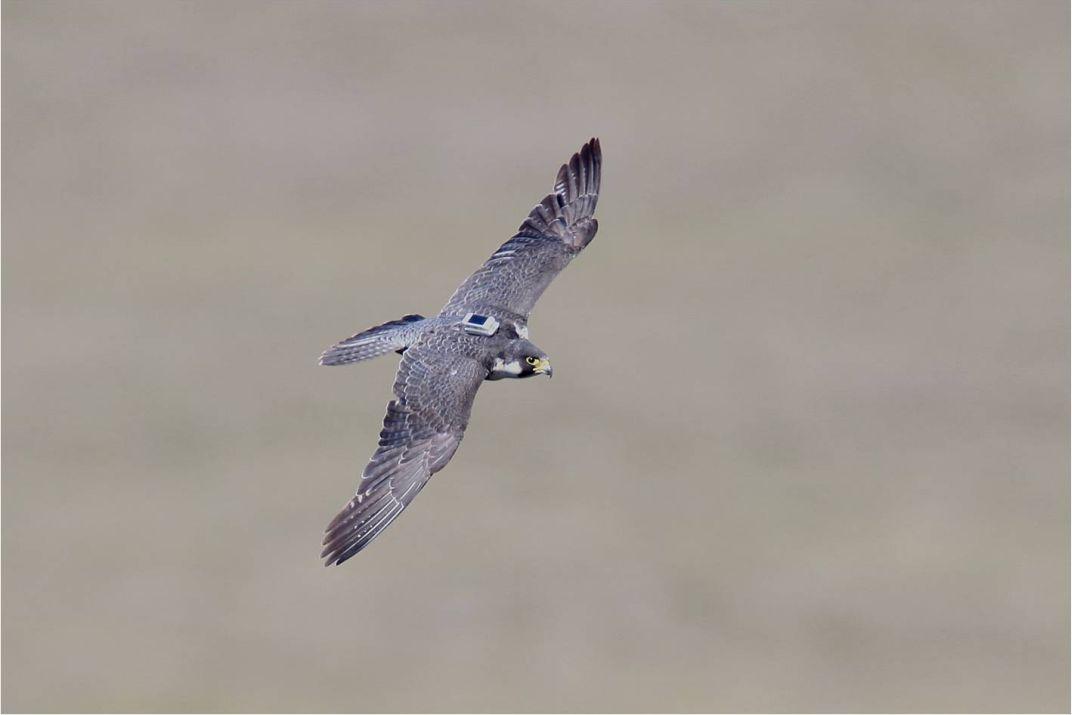Siberian red-breasted geese and peregrine falcons
The Peregrine falcon is a species that our ornithologists are getting to know pretty well. For some years now they have been studying the breeding behaviour of these birds in their nest on the towers of St Michael and St Gudula cathedral. Yet the peregrine falcon is a cosmopolitan and our colleagues have observed a surprising relationship between the Siberian falcons and red-breasted geese.
About the Project
The red-breasted goose is one of the smallest and most beautiful geese species in the world. At the same time, however, it is one of the most endangered species: the UICN (International Union for the Conservation of Nature) classifies this species as ‘threatened with extinction worldwide’.
One of the major reasons for this alarming situation is that little is known about this goose species, especially about its migratory behaviour. Studies are difficult because this species only breeds in the far north of Russia, in the tundra region where the last mammoths used to live. When little is known about the natural history of a species, it is hard to determine the most important threats precisely and to undertake actions that will effectively improve its conservation status.
That is why ornithologists of the Severtsov Institute for Ecology and Evolution of the Russian Academy for Science and our Institute have developed a strong partnership: by sharing their knowledge of the red-breasted geese and exchanging their knowledge of migration studies, they aim to unravel the mystery of their journey from the shores of the Arctic Ocean to the shores of the Black Sea and the Mediterranean.
What is the Falcon’s Role?
The peregrine falcon almost disappeared in Europe and northern America during the 1960s-1970s because of dangerous pesticides. The cause was revealed by intensive scientific studies, which also made it possible to take strong conservation measures. The falcon was saved, and we saw the species reappearing in more and more countries and cities. The couple nesting on top of the cathedral of St Michael and St Gudula in the centre of Brussels is a good example. These falcons illustrate the successful recovery of their species.
The relation between the peregrine falcon and the red-breasted goose is both simple and extraordinary.
The falcon is a cosmopolitan and can be found anywhere, even in the Siberian tundra. There he lives alongside the red-breasted goose. They are really living together: the geese nest on cliffs, a few metres from the falcons. They benefit from the falcon's presence to protect their nests from arctic foxes and snowy owls. Potential enemies are chased away by sharp dives, attacks and yelling from the male falcon, this behaviour also protects the vulnerable geese nests. Normally however, in Winter and during the migration period, the geese are on the falcons’ menu!
The ecology of the red-breasted geese – at least in these regions – is intertwined with that of the peregrines. The protection of one species is therefore strongly dependent on that of the other.
Tracking the Red-Breasted Geese
A first exploratory expedition was organised in July 2012, in the tundra of the Gydan penisula where red-breasted geese and peregrines nest together. During the second expedition in July 2013 on the Taimyr peninsula, 11 red-breasted geese and 4 ‘protected’ falcons were equipped with a mini GPS-GSM transmitter which sends the exact location of the birds several times a day.
In autumn 2013 expeditions were organised along the river Ob and the prairies of Kazakhstan, in order to follow the migration of the geese. Other expeditions have been planned for the coming weeks to observe the geese in their hibernation areas in Romania, Bulgaria and Greece. The collected data will contribute to conservation plans for red-breasted geese and peregrine falcons.
Passports of the Tagged Red-Breasted Geese and Peregrines
Altogether, 11 red-breasted geese and 4 peregrine falcons were equipped with GPS-GSM transmitters. The peregrine falcon tags weigh 20 gr and the geese tags weigh 30 gr. The tags are solar-powered and they transmit GPS positions throughout the GSM network. Localization frequency varies according to battery level from every 2 to 6 hours. Geographical position is precise to a few meters.
All birds were tagged in Eastern Taimyr (Russia), along the Zakharova Rassokha and Novaya rivers.
Peregrine falcons
- Peregrine falcon 02: immature female (1320 gr) incubating 3 eggs, tagged on 03/07/2013. She was protecting a colony of 4 pairs of red-breasted geese.
- Peregrine falcon 03: female (1150 gr) brooding 2 4-5 day old chicks and one addled egg, tagged on 12/07/2013. She was protecting a colony of 5 pairs of red-breasted geese.
- Peregrine falcon 04: female (1150 gr) incubating 4 eggs, tagged on 06/07/2013. She was protecting a colony of 11 pairs of red-breasted geese.
- Peregrine falcon 05: female (1000 gr) brooding 2 one week old chicks, tagged on 16/07/2013. She was protecting a colony of 10 pairs of red-breasted geese.
Red-breasted geese
- Red-breasted goose 06: female (1100 gr) incubating 5 eggs, tagged on 07/07/2013, protected by an untagged female peregrine falcon.
- Red-breasted goose 07: female (1150 gr) incubating 7 eggs, tagged on 06/07/2013, protected by female peregrine falcon 04.
- Red-breasted goose 08: female (1150 gr) incubating 5 eggs, tagged on 05/07/2013 in same colony as Red-breasted goose 06, protected by an untagged female peregrine falcon.
- Red-breasted goose 09: female (1150 gr) incubating 8 eggs, tagged on 08/07/2013, protected by female peregrine falcon 04.
- Red-breasted goose 10: female (1100 gr) incubating 5 eggs, tagged on 08/07/2013, protected by female peregrine falcon 04.
- Red-breasted goose 11: female (1300 gr) with brood of 3 2 day old goslings, tagged on 12/07/2013, protected by female peregrine falcon 03.
- Red-breasted goose 12: male (1350 gr) with brood of 5 2 day old goslings, tagged on 12/07/2013, protected by female peregrine falcon 03.
- Red-breasted goose 13: female (1050 gr) incubating 7 eggs close to hatching, tagged on 13/07/2013, protected by female peregrine falcon 03.
- Red-breasted goose 14: male (1300 gr) with brood of 5 1 day old goslings , tagged on 15/07/2013, protected by female peregrine falcon 03.
- Red-breasted goose 15: male (1250 gr) with brood of 7 3-4 day old goslings, tagged on 17/07/2013, protected by female peregrine falcon 05.
- Red-breasted goose 16: male (1350 gr) with brood of 8 3-4 day old goslings, tagged on 17/07/2013, protected by female peregrine falcon 05.
With the support of the Leopold III - Fonds voor natuuronderzoek en natuurbehoud / Fonds Léopold III pour l'Exploration et la Conservation de la Nature and Alcyon Belux, veterinary distribution center of drugs, food and medical supplies
Migration path of red-breasted geese and peregrine falcons equiped with a tracking device
[2013] [2014]
